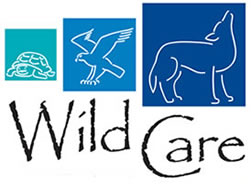
Dovekie Dilemmas
By Kate Rollenhagen Diggs
When winter winds are blowing, that’s when we know Dovekies will be soon arriving at Wild Care’s door.
You may have seen stories about them in the paper when we receive large numbers of them and try to get them back out to the open ocean. They are very tricky birds to rehabilitate and don’t come ashore unless something is seriously wrong.
So far since December we’ve received 17 Dovekies. Two of the birds were dead on arrival, and we were able to release 10 of them back to the ocean.
Dovekies are tiny birds, only 8” long and weighing 6 oz., that look like miniature penguins. They usually spend their time out in the ocean, feed- ing on plankton that they capture un- derwater (which is one reason why it’s so difficult to take care of them — they won’t eat food presented to them in a dish).
They nest in summer in Greenland and northern Europe, but spend the winter on the ocean, usually far offshore.
Occasionally, they are blown inland by high winds and have difficulty taking off from the ground — they normally never come to land except on cliffs when they are nesting.
When we receive them, we have to load them up with lots of calories, usually with a tube feeding formula and tiny fish, and give them as much time as possible in the seabird pools to main- tain their waterproofing.
When it’s time for them to be released, we must be sure to watch out for gulls who will make a quick meal out of the tiny dovekies — so we release them at night when the gulls are sleeping and the dovekies can make their way out to sea safely.
Wild Night Out Online Auction
READY, SET, BID… We are so excited to announce that our Wild Night Out Online Auction is now live!
READ ALL NEWS
CALENDAR OF EVENTS
04 April, 2024
Wild Night Out Online Auction
EVENT DETAILS
05 April, 2024
Wild Night Out
EVENT DETAILS
28 February, 2024
Wildlife Winter/Spring Talk Series
EVENT DETAILS

DID YOU KNOW??
Wild Care has a state-of-the-art seabird therapy pool, which allows seabirds and waterfowl to exercise on running water. This will help our bird friends recover more quickly so they can get back to their watery habitats!

